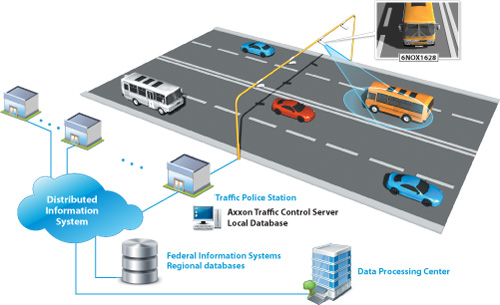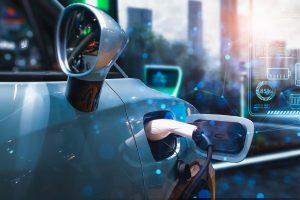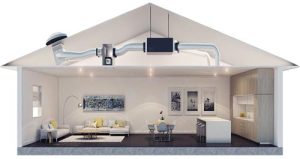Automatic License Plate Recognition Cameras and Their Role in Community Saf

License plate recognition cameras (LPR) capture images of passing vehicles and their license plates. The images are then run through ALPR software, which recognizes the characters and converts them into digital alphanumeric data that can be saved to a database or used to open gates or barriers.
Older systems struggle when the image is unclear or distortions occur. But modern options use techniques such as fuzzy matching to overcome these issues.
They Can Deter Crime
A license plate recognition camera is an imaging device that scans passing vehicles or parts of them, usually their fronts and backs but especially their plates. It then converts the images into digital alphanumeric data, which can be saved to a database or used for opening a gate or barrier after verification of the plate number. Some are governmental, while others are purely commercial or even private.
In the suburb of Cobb, police began an experiment this year. They placed 13 solar-powered automatic license-plate readers along public roads near the local Six Flags amusement park. They hoped that this “mass surveillance” would deter crime and improve the area’s safety.
They may have succeeded: robbery and nonresidential burglary in the neighborhood dropped over 50 percent each, according to Cobb County’s deputy chief of police. But many people are wary of this type of technology, which is not without its risks. For instance, the system has been known to capture private information—like shots of children exiting a car in a garage—that surely should not be retained.
The cameras can also record more than the vehicle itself, including its make, model, color, alterations, and other identifying details. These can help authorities investigate a crime, as well as identify and track suspects. Unlike full-time security guards, these cameras operate 24/7 and can provide actionable evidence much faster than witness statements.
They Can Help Catch Criminals
The ability to automatically recognize license plates makes these cameras an excellent tool for catching criminals. When a vehicle violates a law or is suspected of being involved in a crime, computers can alert police to the car make, year and direction of travel. This allows law enforcement to investigate and catch criminals faster than ever before.
The cameras can also help to track vehicles that are reported stolen. This is a critical aspect of community safety, especially as many stolen cars are used to commit other crimes. By alerting police when a known suspect or stolen car enters the community, they can stop the crime before it occurs.
The information from the plate recognition camera is then run against law enforcement databases for abducted children, missing fugitives and other wanted gang members and criminals. If the information matches, the system will alert police to where the car is located so they can intercept it. This is how Wake Forest’s ALPR system aided in the recovery of three stolen vehicles within 24 hours of being activated.
They Can Help Prevent Crime
For law enforcement agencies, license plate recognition systems can be a valuable tool in preventing crime. By tracking a known suspect’s vehicle, they can alert police to its presence in the area and take proactive steps to stop it. This is especially useful for vehicles of a known threat, such as a disgruntled employee or a car being driven by a person who has been arrested in the past.
With technology like this, officers can focus their resources on other important aspects of community safety. The automatic nature of this surveillance makes it less stressful for departments to monitor and doesn’t add to existing staff workloads. Additionally, a license plate reader can be integrated with other security systems to provide additional intelligence and help deter crimes in real-time.
While many of the advantages that LPR offers make it a desirable security system, there are still some concerns to keep in mind. The most notable concern is that the technology can capture private information. This is because the photographs of a vehicle’s license plates can reveal images of its driver and passengers, its immediate surroundings, and even bumper stickers that can indicate political or social views.
A solution to this issue is for police to limit the amount of time they retain ALPR data, and only use it with a warrant supported by probable cause in emergency situations. Additionally, communities should be aware that they can install their own ALPR cameras. Homeowner associations, for example, can tie their cameras into the national network offered by Flock and log the license plate numbers of cars that enter or leave their community.
They Can Help Make Communities Safer
When it comes to community safety, ANPR systems are a valuable tool. They can help drive insights for a variety of applications from security to traffic management and access control. And they can even be used to identify vehicles that are known to have been involved in crimes.
However, just like any tool, it must be handled with care. Whether it’s for law enforcement or homeowners associations, ALPRs need to be deployed carefully so that they don’t contribute to the surveillance state. This requires transparency and accountability from lawmakers, policymakers, and technology vendors.
One way to do this is by instituting a two-step scanning process. The first pass through the system should not reveal any protected personal information, but rather only the vehicle’s registration and presence on a hot list. Only if that initial run doesn’t yield a basis for further police action should the second pass be allowed.
Another way to improve community safety is by ensuring that the camera’s image quality is high. This can be accomplished by using cameras that are designed to recognize license plates in low-light conditions or with reflective ambient light (like street lamps) and leveraging video analytics to reduce false positives. Additionally, you should look for a camera that is vandal resistant. This can be done by incorporating features like UV-proof coating or a rating of 20 joules of impact resistance.







